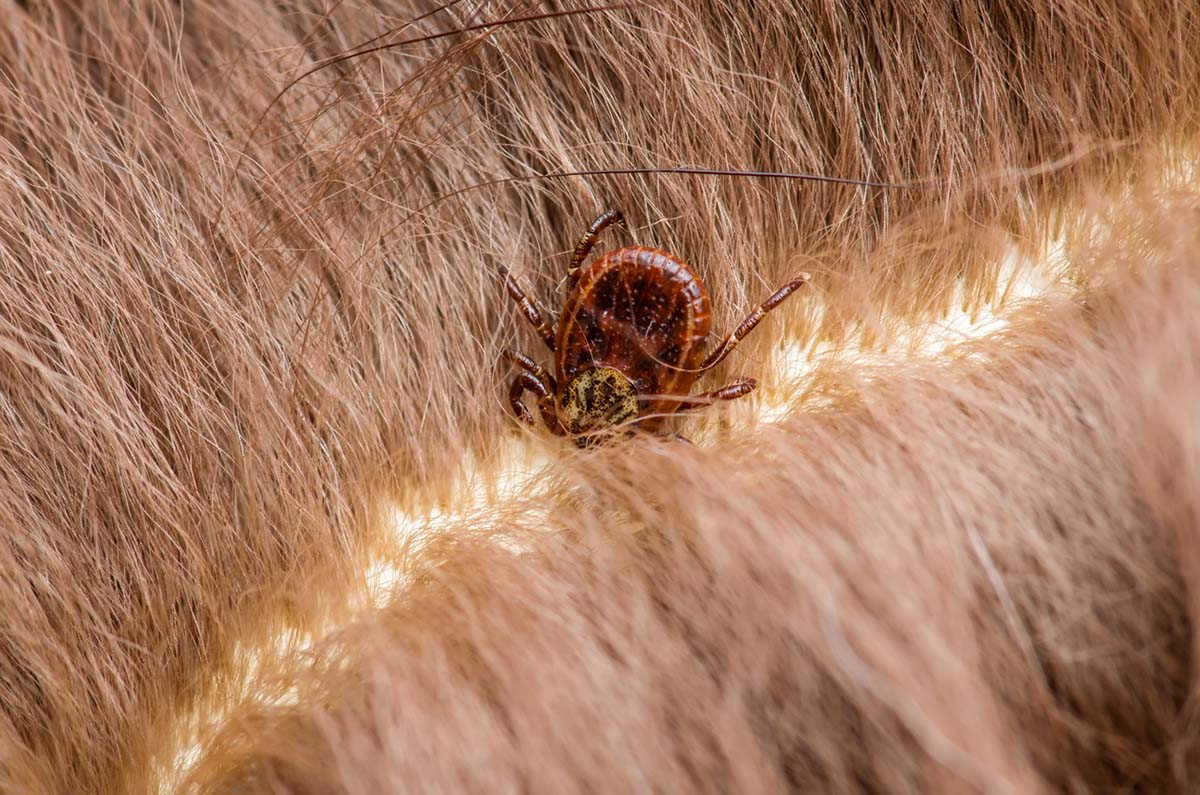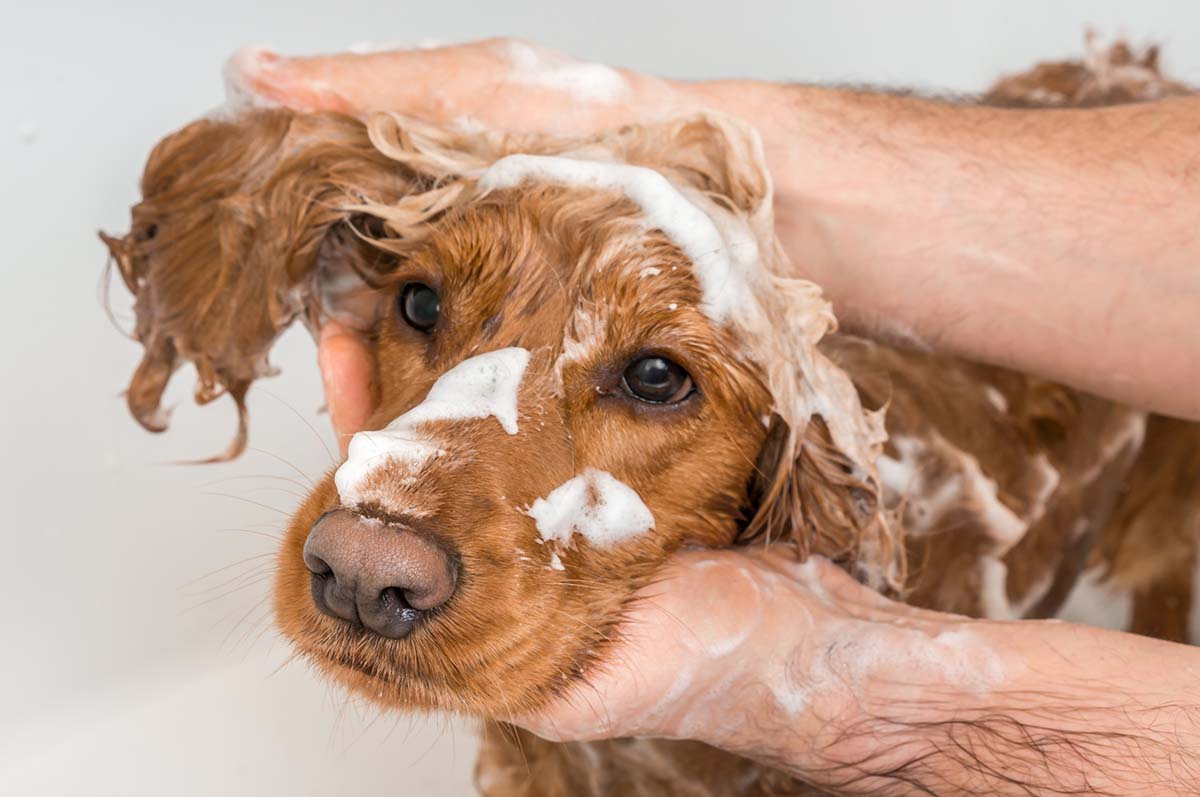How to Remove a Tick From a Dog
No dog lover wants to deal with ticks. Alas, we must do what's best for our furbabies. Here's how to safely remove a tick from a dog.
No dog lover wants to deal with ticks. The word alone sends shivers up my spine, thinking of the times I’ve had to pull these blood-sucking parasites from my dog’s skin.
Gross. And if dealing with tick removal wasn’t bad enough, they carry dangerous diseases like Lyme disease and Rocky Mountain Spotted fever. As a dog lover, you probably have questions about ticks and your dog’s safety.
- How do you safely remove ticks?
- Is your dog now at risk for diseases? (The short answer is “yes.”)
- What do you do with the tick once you remove it from your dog?
- How do you prevent ticks from latching on your dog in the first place?
There are a lot of myths and urban legends about tick removal. People suggest burning these parasites, suffocating them, and even asking if you can ignore them until they fall off.
Not only do these not work, they aren’t safe ways to remove ticks and can put your pup at risk.
What Pet Lovers Need to Know About Ticks
You know ticks are parasites. You probably also know they tend to hang out in fields, woods, and tall grasses, where they wait for a passing pooch to land. Once they’ve found their mark, they can burrow into your dog’s fur. Some favorite areas are the armpits, deep in the paws, behind the ears, or at the base of the tail.
Once the tick gets cozy, it latches onto your dog’s body with its mouth and starts sucking blood like a miniature vampire. Your dog’s blood provides the nutrients the tick needs to lay eggs. A tick can lay 2,000+ eggs!
Yes, it sounds like a horror story.
That’s why you want to practice tick prevention with topical treatments and tick collars. But if your dog does get a tick, what do you do next?
How to Safely Remove a Tick from Your Dog

This is not for the squeamish, but unfortunately, you’re going to have to get in there for the tick removal process. If you look at the tick’s body, you’ll see a rounded body with a tiny head. You want to ensure you pull the tick’s head out along with the body. Otherwise, it can continue introducing pathogens into your dog.
The CDC suggests using clean tweezers, grasping the tick gently, and pulling upward in a steady motion. If you find the tick quickly, it may not have enough time to latch onto your pup and will be easier to remove. That’s why checking your dog thoroughly after walks and romps in the yard is a good idea.
You don’t want to wait for the tick to gorge itself on your dog’s blood, lay eggs, and fall off. Not only does that leave you with a potential tick infestation, but also risks your dog’s health.
Once you’ve managed to pull the entire tick out of your dog’s fur, you can flush it down the toilet or wrap it in tissue and crush it.
Then, use rubbing alcohol on the bite area to clean and sterilize it.
Tick Removal Myths
Don’t subscribe to popular myths like suffocation or burning a tick. They don’t work while the tick is still embedded in your dog’s skin.
You can suffocate a tick in alcohol, nail polish, or Vaseline once you’ve removed it from your dog’s skin, but don’t try it while it’s attached to your pup. Why? Because ticks breathe slowly. We’re talking 3-15 breaths an hour, and it can take hours for them to suffocate. Meanwhile, they’re feeding on your dog and potentially introducing pathogens into the bloodstream.
As for burning the tick off your dog, will your dog let you get close with a flame?
Avoid Tick-Borne Illnesses
Lyme disease and Rocky Mountain Spotted Fever (RMSF) are tick-borne diseases that can affect pets and people.
The CDC reports RMSF is the most deadly tick-borne illness in the country. Spread by the American dog tick, it can be deadly in both pets and people.
These illnesses can present as fatigue, loss of appetite, and fever. Other symptoms of tick-borne health issues include lameness and swollen lymph nodes in the case of Lyme. RMSF produces rashes.
Anytime your dog’s behavior, movement, or skin changes, make an appointment with your veterinarian to catch health problems early.
How do ticks spread diseases?
Imagine the tiny tick biting into your dog’s skin. Now they’ve created a small injury. If the tick had previously fed on another creature that was sick, they’ve potentially introduced those pathogens into your dog. That’s how the cycle works. Tick-borne illnesses are rising across the U.S. and even in urban areas, tick populations are increasing.
There are also seven different types of ticks, and you can track them on this tick surveillance map if you’re into looking at tick species.
Tick Prevention Basics

If you’re not already using a year-round topical flea and tick treatment on your dog, then that’s a good place to start. This once-a-month treatment helps guard against parasites and can repel a tick from latching on if they do get on your dog.
My American Eskimo pup once took a gander through a tick-laden field, and I was so glad he was on tick prevention! As I scoured his fur and skin for ticks, I was able to remove dozens of ticks that hadn’t latched onto his skin with a dog brush.
You can also add a flea & tick collar to your dog for added protection.
Even with tick collars and topical protections, your dog can still suffer from a tick bite because these things are rampant. They’re no longer only a warm weather problem. Ticks live year-round in much of the country these days.
Giving your dog regular tick checkups after your walks or outdoor playtime is smart. Be sure to check your dog’s fur.
Some of a tick’s favorite hiding spots include:
- between the paws
- behind the ears
- belly
- armpits
- tail
I recommend using a small comb to check for ticks, and if you find them, a tick removal tool or a pair of tweezers will help you remove the entire tick, including the mouthparts, and you can safely dispose of them by flushing them down the toilet.
You can sterilize your tweezers before going after a tick with a cotton ball dipped in isopropyl alcohol. This way, you reduce your pet’s risk of infection by introducing stray bacteria from your tweezers onto your pet’s skin.
Additionally, you can keep the grass cut low if you have a yard or outdoor area. Ticks prefer taller grasses and wilder green spaces.
Now that you know the basics of tick prevention and how to remove a tick from your dog safely, you’re better equipped to prevent ticks from ruining your outdoor fun. Help your dog feel his best with healthy fun, food, and a tick-free existence!
This content is for informational use only and does not replace professional nutrition and/or medical advice, diagnosis, or treatment. It is not a substitute for and should not be relied upon for specific nutrition and/or medical recommendations. Please talk with your veterinarian about any questions or concerns.








